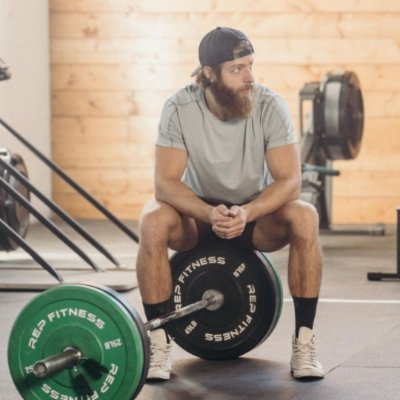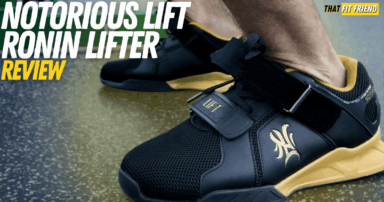If you’re new to working out then you may be wondering, “How much do my shoes really matter for my gym sessions?” In short, your shoes matter a lot in the gym.
Now, how much your gym shoes matter will vary and that’s what I’ll discuss in this article. As a shoe reviewer who’s reviewed over 200 pairs of shoes and a strength coach, I’m constantly helping athletes and lifters pick the best gym shoes for their training style.
In the grand scheme of training, your shoes start to matter more as you get more serious and niche with your training style.
Whether you’re strength training, doing CrossFit, or HIIT workouts, it’s a good idea to find a pair of gym shoes designed for your training style. Most gym shoes will be built with construction features that are designed to promote a particular type of workout and performance.
Do You Need Special Gym Shoes?
In the gym, there are typically four reasons why I think using the right gym shoes can be crucial for promoting better performance, increasing your shoe’s durability, and protecting your investment.
Reason 1: Midsole Density Influences Stability and Versatility
Your shoe’s midsole is the first and arguably the biggest construction feature to consider when finding a new pair of gym shoes. The midsole is the material that separates the outsole (bottom of the shoe) from your foot.
Midsoles in gym shoes are typically built with foam and every company will often use their own proprietary blended foam material. For example, you have Nike React Foam in Nike gym shoes, Reebok Floatride Energy Foam in Reebok shoes, and this goes on.
In gym shoes, a quality-built midsole will usually combine elements of stability and responsiveness giving it a denser feel compared to midsoles used in most traditional running shoes.
Your midsole should reflect how you train and plan to use your gym shoes. I like to think about a gym shoe’s midsole as existing on a spectrum of stability and responsiveness.
This spectrum will correlate with how you plan to use your gym shoes. As you get more specific, this spectrum will start to matter more.
- If you plan to primarily lift and train heavy, then you’ll want to explore gym shoes with denser midsoles and lower stack heights as these will promote better balance, stability, and performance for lifting.
- If you plan to blend lifting with things like HIIT and CrossFit, then you’ll want a gym shoe with a blend of stability and versatility. A good medium-density midsole will often be the best for this.
- If you plan to primarily do HIIT, short runs, and light lifting, then you’ll likely want to explore midsoles that are a little plusher, “bouncy”, and responsive.
Takeaway Thoughts: The midsole in your gym shoe is important because it can relate to things like balance, stability, versatility, and overall comfort. As you get more niche with your training, your shoe’s midsole will matter more.
Reason 2: Outsole Design Influences Traction
The outsole used in good gym shoes is another construction feature that can play a huge role in performance. The outsole is the material that covers the bottom of the shoe.
Most gym shoes will utilize full or nearly full rubber outsoles. Rubber outsoles with good tread patterns can be crucial for promoting traction and grip on different surfaces in the gym.
Every gym is built differently and most gyms will have a blend of floor materials like rubber gym floors, wooden platforms and floors, turf, and even concrete. A shoe’s grip on these surfaces can vary greatly depending on how you train and the shoe you’re using.
For example, if you’re doing explosive work on turf, then you’ll want to find a gym shoe with a rubber outsole that has a more aggressive tread patterning. A flatter outsole or shoe with more exposed foam can experience slip issues in this scenario.
Another classic example of why your shoes outsole matters is if you’re doing classes or HIIT workouts on wooden floors. A rubber outsole will give you more bite for the demands of these training contexts and it will prolong your shoe’s lifespan.
Any time you have exposed foam on the bottom of your shoe whether it’s because of splits in the outsole rubber or it’s built purposefully so that to save on weight you can run into durability issues faster.
Takeaway Thoughts: Assess your training and your gym’s floors. If you’re doing explosive work or workouts that entail multi-directional and power-focused elements then you’ll want to explore gym shoes with well-built rubber outsoles.
When in doubt, I always suggest airing on the side of finding gym shoes with more rubber on their outsoles. They’ll be best for overall traction and durability. While saving on weight can be important in some settings, most will be better off opting for rubber outsoles.
Reason 3: Upper Durability Can Vary Greatly
Another reason why your gym shoes matter is their upper construction and how that can translate to security and durability. The upper on your gym shoe is the material that encloses your foot and it’s typically built with multiple materials.
In traditional gym shoes, you’ll often see uppers built with meshes, knits, textile materials, and synthetic blends. All of these materials can vary regarding their breathability and durability.
As you get more specific with your training, your gym shoe’s upper will begin to matter more. Much like my midsole spectrum above, the upper can also exist on a spectrum of durability.
Some examples of workouts and training styles that place a high demand on a gym shoe’s durability include CrossFit and athletic-style workouts.
- CrossFit can wreak havoc on a shoe’s upper due to the abrasion you can experience when rope climbing and doing burpees to name a couple of classic examples.
- Athletic-style training can wreak havoc on a shoe due to the stress you can place into uppers when jumping, sprinting/running, doing lateral work, and explosive training.
Takeaway Thoughts: If you’re just lifting or doing some casual classes here and there then your gym shoe’s upper construction won’t matter nearly as much as these contexts won’t place nearly as much demand on a shoe’s ability to lock the foot down and resist abrasion.
When in doubt, I always suggest looking for gym shoes with reinforced layers around the toe box, base of the toe box, and midfoot as these can all be “problem” areas regarding early breakdown.
Reason 4: Sizing Can Influence Comfort and Performance
Sizing and fit is the final reason why you should look for special gym shoes for your training. Far too often, I see beginners reach for poor-fitting pairs of gym shoes because they think, “That’s just how it is or this is what everyone uses.”
We all have different foot anatomies and how a shoe fits my foot can be entirely different than how it fits your foot. Foot width, shape, length, and thickness can all influence how a shoe fits.
Every shoe is built slightly differently regarding their sizing and fit and this is because every company has their propriety lasts that they use. The last of a shoe is essentially the mold that companies build shoes around.
Companies tend to use last constructions that capture the largest part of the market or their targeted niche market. A great example here is how Altra tends to only utilize wider lasts because they market themselves as being a “wider” option.
A converse example here would be Nike and how most of their shoes tend to fit a little more snuggly with tapered “athletic” toe boxes. Granted, Nike is slowly moving to wider lasts with its training shoes.
While, in theory, this makes sense from a marketing perspective, it doesn’t always align with how an athlete and lifter’s foot is shaped, and far too often, lifters try to fit square pegs into round holes regarding their feet and shoes.
When assessing your gym shoe’s fit you want to look for two things while training. One, are you experiencing heel slip? If so, your shoe is likely too big or wide for your feet.
Two, are you jamming your toes into the end of your toe box? If this is happening, then you likely need a wider shoe or you should size up a half-size — or opt for a different model entirely.
Takeaway Thoughts: It’s normal for gym shoes to fit differently, and this will vary based on your foot anatomy and how a shoe is built. When in doubt, I’d suggest going to your local shoe or running store and having your foot properly sized.
If you can figure out how thick and wide your foot is, then you can make more educated picks regarding your gym shoes. After all, life’s too short to train in poor-fitting and uncomfortable gym shoes. A little research goes a long way.
Frequently Asked Questions (FAQ)
Q:What shoes work best in the gym?
Q:Do your shoes matter in the gym?
Final Remarks
Your gym shoe selection can matter greatly for both your performance and investment. Using the right gym shoes always gets more important as you get more serious and specific with your training.
When selecting your next gym shoes, I’d highly suggest taking a moment to assess how you plan to use your shoes, then going over the four points above to narrow down the best picks for your needs.
If you need additional help finding the right gym shoes for your needs, drop a comment below or reach out to me via Instagram (@jake_boly or @that_fit_friend).















Add a Comment